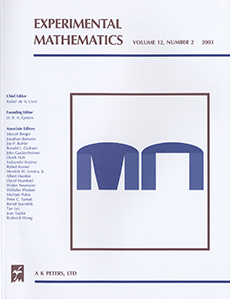Abstract
Homotopies provide computational evidence for a challenging instance of a conjecture about whether all solutions are real. By a homotopy we mean a family of polynomial systems that describes algebraically the geometric transition from an easier configuration in special position into the general configuration for the problem we want to solve. The solutions to our problem lie at the end of the solution paths we trace with numerical continuation methods starting at the solutions of the easier, special problem. The numerical difficulties are overcome if we work in the true synthetic spirit of the Schubert calculus, selecting the numerically most favorable equations to represent the geometric problem. Since a well-conditioned polynomial system allows perturbations on the input data without destroying the reality of the solutions we obtain not just one instance, but a whole manifold of systems that satisfy the conjecture. Also an instance that involves totally positive matrices has been verified. The optimality of the solving procedure is a promising first step towards the development of numerically stable algorithms for the pole placement problem in linear systems theory.
Citation
Jan Verschelde. "Numerical evidence for a conjecture in real algebraic geometry." Experiment. Math. 9 (2) 183 - 196, 2000.
Information




